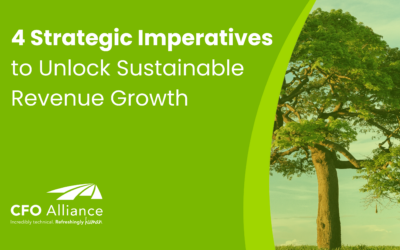10 KPIs Every SaaS Startup
Should Measure
What is a key performance indicator?
- Churn / Attrition Rate
- Monthly Recurring Revenue (MRR)
- Annual Recurring Revenue (ARR)
- Non-Recurring Revenue
- Recurring Vs. Non-Recurring Ratio
- Bookings
- Gross Margin
- Net Burn
- Customer Lifetime Value (LTV)
- Customer Acquisition Cost (CAC)
Is my business financially viable?
What business levers will drive improved performance?
Am I tracking the right financial data points?
Obsessing over data is practically in the job description of a SaaS entrepreneur. But if you’re not drawing business relevance out of those numbers – or if you aren’t collecting the data in an organized and streamlined way – all that information is just noise.
That’s the difference between a metric and a key performance indicator (KPI). A KPI tells you something important about your business – something that will show you what steps you need to take to improve outcomes in the future.
Metrics Are The Raw Data – KPIs Are The Intelligence
Of course, you have to know what is going on before you can determine why. This has two big implications for your company:
- You must measure the right things.
- You need real-time visibility into your key metrics and KPIs.
Let’s start with that first idea: what are the most important metrics you should be tracking?
What KPIs Should Tech Startups Measure?
SaaS companies are different from traditional software companies and other types of sales-based companies because they depend on recurring revenue for the lifeblood of their business. In other words, the longer a customer stays with you, the greater your return on the money you spent acquiring that customer. For that reason, many of your most valuable metrics will relate to customer acquisition and retention.
You probably have a good idea of what these metrics are already. Still, it’s important to spend some time digging into them and making sure you have a solid methodology for tracking them and drawing insights from the raw data.
With that in mind, let’s take a look at ten key SaaS metrics that will help you keep your finger on the pulse of your company:
1. Churn / Attrition Rate
Churn measures the rate at which customers pack their bags and leave (to be blunt). You can measure it in terms of total customer churn or revenue churn. While it’s not quite as sexy as some of the more sophisticated metrics that show you specific details, churn lies at the heart of your business performance.
Think of a high churn rate as a distress signal. You know there’s a problem, but you haven’t yet figured out where the problem is. A high churn rate should prompt additional questions such as:
Why are we churning?
- Is it a product problem or a service problem?
- Are we targeting the right audience?
- What are the signs that are a customer is about to leave?
If you are doing a bang-up job with sales but a mediocre job with retention, that will show up in your churn rate.
2. Monthly Recurring Revenue (MRR)
MRR measures recurring revenue streams over time. It shows you how your business is building momentum (or not). Don’t include one-time fees or professional service fees (unless the service occurs every year of the contract) in your MRR calculation; this is strictly a measure of revenue components that recur from month to month.
A growing MRR means you are adding new customers and they are staying with you. On the other hand, if you are adding customers but your MRR is remaining stable (or worse, falling), it means you are experiencing revenue churn and you’ll need to figure out why.
3. Annual Recurring Revenue (ARR)
ARR zooms out so you are looking at recurring revenue streams for the year instead of for the month. It is a crucial metric in the valuation of your company for M&A transactions. When ARR is stable and demonstrates growth, it increases your multiples and boosts confidence in your business model on the part of the buyer.
4. Non-Recurring Revenue
Non-recurring revenue includes all of the one-time service fees and revenue components that don’t occur on a monthly basis. Keep this information separate from your recurring revenue calculations.
Non-recurring revenue is less scalable and has lower margins than recurring revenue, which means it won’t add to your valuation for M&A purposes. Still, among publicly traded SaaS companies about 20% of revenue streams come from non-recurring sources on average. That makes it an important source of cash flow, and non-recurring premium services can also be important factors in customer retention.
5. Recurring Vs. Non-Recurring Ratio
This metric looks at the balance of recurring revenue and non-recurring revenue. We recommend aiming for an 80/20 split. Of course, early-stage fast-growing companies may initially see closer numbers, but it shouldn’t be a long-term scenario. A clear plan to move closer to that desired ratio over time will help you keep your eye on the prize as you start with your end goal in mind.
6. Bookings
Bookings help you project how much revenue you can expect to earn over time based on new customer acquisitions. Because they are a projection and not a realized revenue, however, they do not directly impact your financial statements.
Bookings also demonstrate the effectiveness of your sales process. By comparing them with other metrics such as MRR, ARR, and churn, you can evaluate the performance of your customer service and product delivery processes.
Tip: Be sure you don’t confuse bookings with billings. Bookings indicate the value of the contracts you have closed (how much your customers have contracted to pay) and they look forward over the total life of the contract. Billings track the invoices you have already sent and may occur at different frequencies (monthly, quarterly, yearly). If you use bookings and billings interchangeably, it will be much more difficult to calculate your MRR and ARR.
7. Gross Margin
Gross margin tells you how much revenue you have left after accounting for the cost of goods sold. In SaaS companies, these costs may include support, services, customer success, cost of operations, and any other outlay involved with providing the subscription service.
A high gross margin is critical for startups because it means you have plenty of revenue available to invest in the growth of your business. It also plays a significant role in valuation since it indicates how much profit can be expected.
8. Net Burn
Your burn rate is how much money you lose over time. Gross burn includes expenses and all other cash outlays. Net burn is calculated by subtracting gross burn from total revenue, and it’s a clear indicator of profitability. If your company is making money and growing, you should have a negative net burn rate. Positive net burn occurs only when you spend more than you make.
9. Customer Lifetime Value (LTV)
Customer LTV tells you how much money you generate per customer on average over their entire relationship with your company. Use this metric to determine how much you can spend on customer acquisitions and still remain profitable. Since maintaining existing customers costs less than acquiring new ones, increasing LTV can be a great way to boost profit and drive growth.
10. Customer Acquisition Cost (CAC)
How much do you spend to gain one new customer? That is your total (or blended) CAC. Calculate it by dividing the total acquisition cost by the number of new customers acquired across all channels. This can be useful, but it’s a bit broad. It doesn’t, for example, tell you whether your paid advertising campaigns are generating enough new customers to be profitable.
For this reason, investors prefer to look at paid CAC (the cost of new customers acquired through paid marketing) when evaluating your business. It’s a more useful indicator of whether you will be able to scale up your user acquisition budget profitably.
Start with the End In Mind
There are scads of other data points you could track, but these ten foundational financial metrics will help you evaluate where you are on the start-scale-exit trajectory. If your goal is to scale your business and eventually sell, you’ll need to keep a close eye on these KPIs in real-time.
But how exactly do you do that? That’s where CFO Alliance can help. We come alongside entrepreneurs just like you, helping you gain clear visibility into the financial state of your business so you can improve future outcomes. By simplifying the process of monitoring key SaaS metrics and technology KPIs, we help you start with the end in mind so you can get down to the business of achieving your goals.
Contact Us Today & Start The Conversation!
Related Post
4 Strategic Imperatives to Unlock Sustainable Revenue Growth
4 Strategic Imperatives to Unlock Sustainable Revenue GrowthCreating long-term, sustainable revenue growth takes more...
Future-Proof Your Workforce with a Modern Talent Agenda
Future-Proof Your Workforce with a Modern Talent AgendaWhat does the future of talent look like? It’s a fair question,...
The Talent Behind the Tech: How Skills-Based Hiring Supports Technology Innovation
The Talent Behind the Tech: How Skills-Based Hiring Supports Technology InnovationStaying relevant with technology in...




